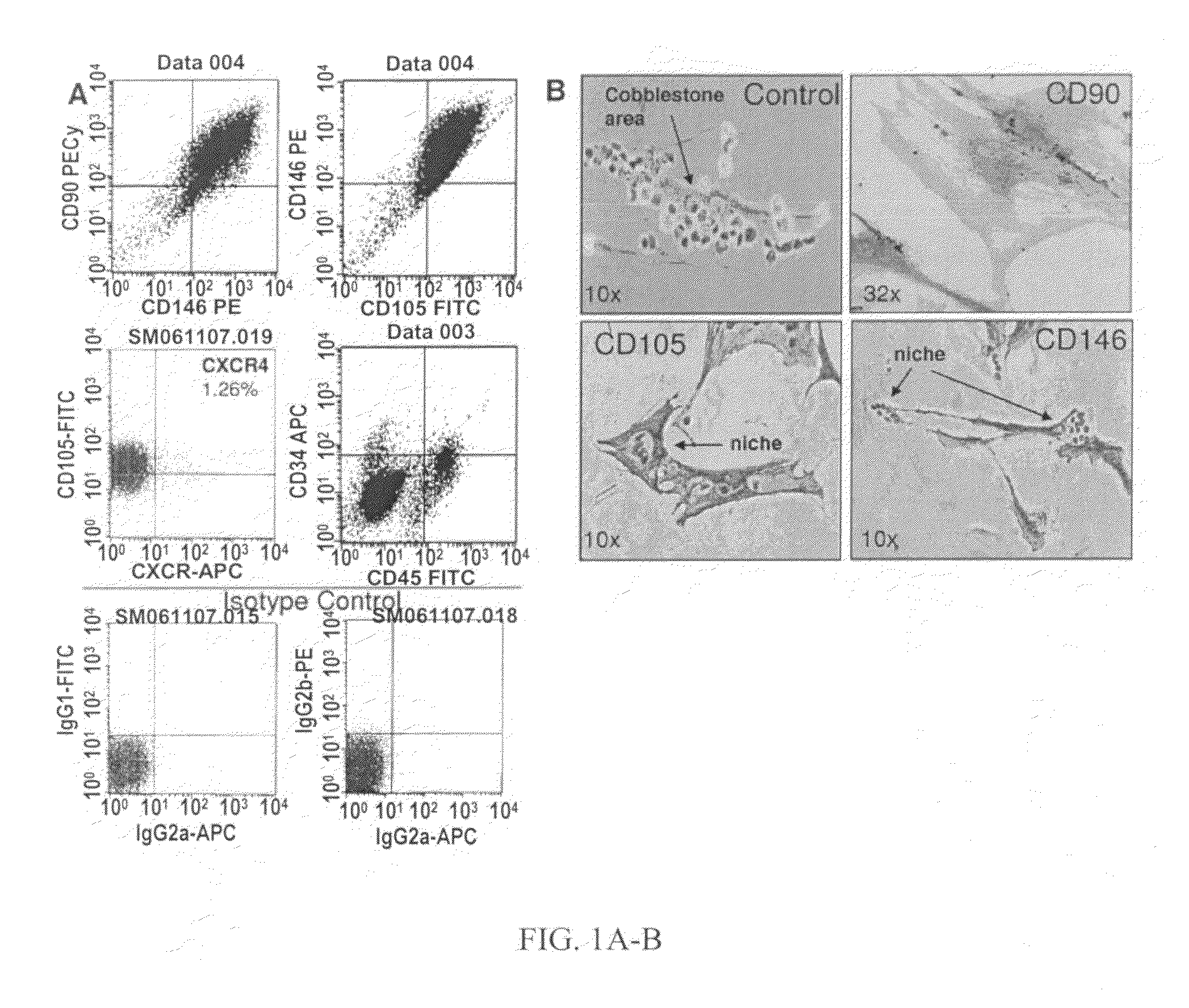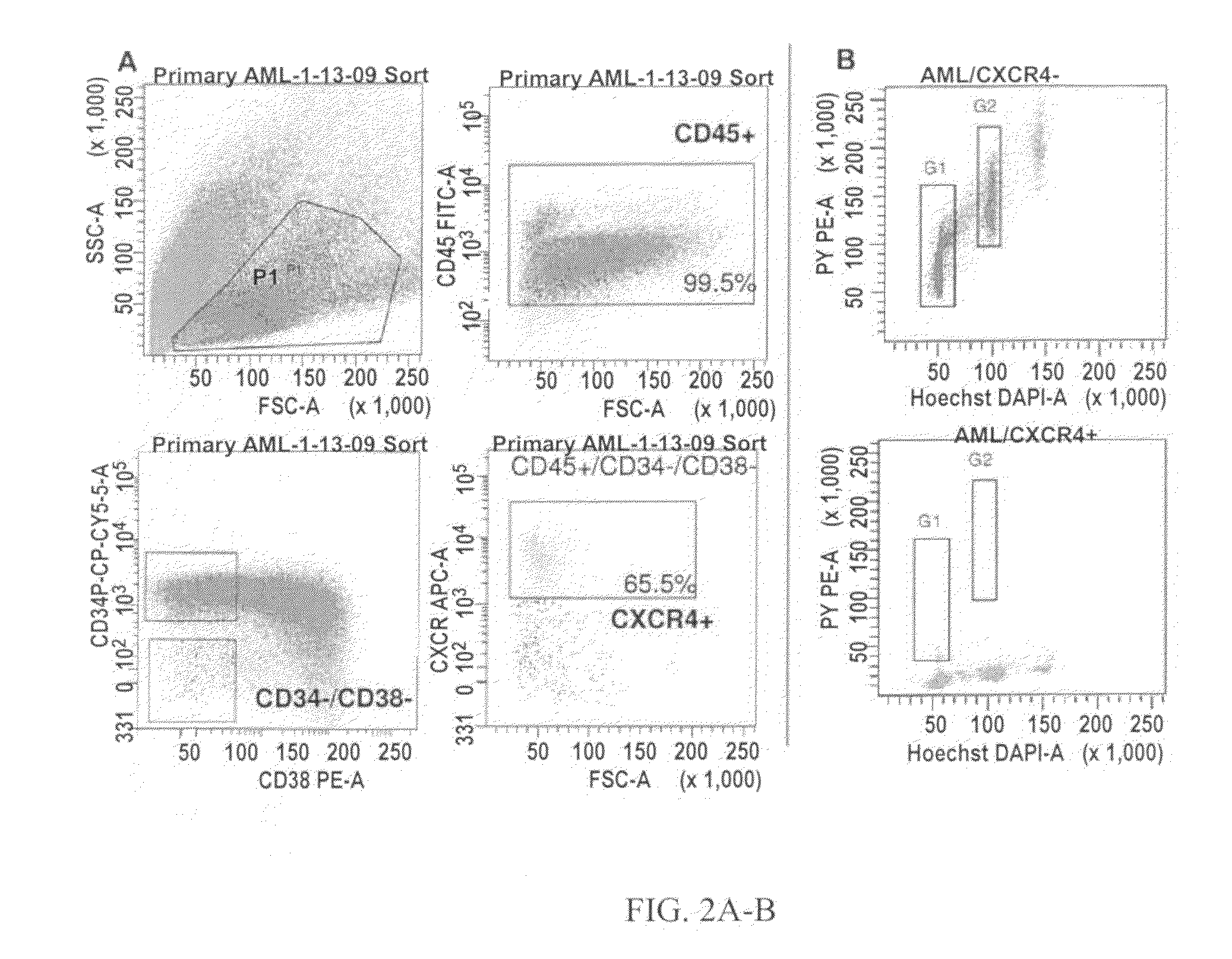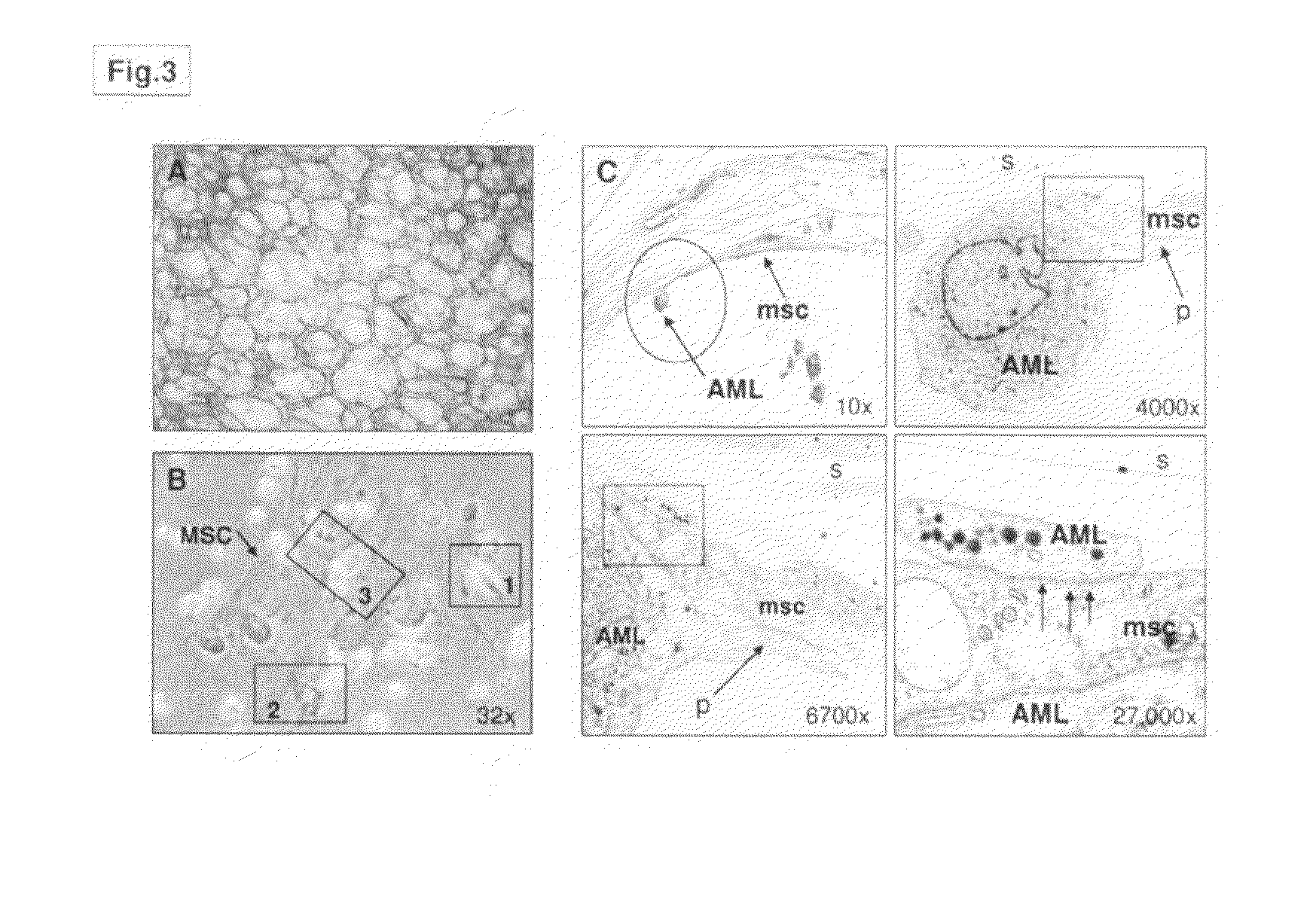Human bone marrow microenvironments and uses thereof
a technology of bone marrow and microenvironments, applied in the field of human bone marrow microenvironments, can solve the problems of unclear mechanisms that guide stem cells into the decision to remain quiescent or exit the cell cycle, and the knowledge of stromal niche biology remains very limited
- Summary
- Abstract
- Description
- Claims
- Application Information
AI Technical Summary
Problems solved by technology
Method used
Image
Examples
Embodiment Construction
[0025]As discussed above, the present invention is directed to an in vitro cultured human permissive niche, or human bone marrow microenvironment, comprising a scaffold coated with human mesenchymal stem cells and a culture medium, wherein the stem cells are viable and proliferate in culture and the niche is permissive for the establishment of introduced hematopoietic or leukemic cell populations.
[0026]In accordance with the present invention, a scaffold is a three dimensional structure that serves as a suitable support for the grown and proliferation of the stem cells, does not interfere with stem cell growth and viability, and permits adherence of the human mesenchymal stem cells. In the preferred embodiment, the scaffold is an elastomeric matrix that is preferably porous, and more preferably is reticulated and resiliently-compressible. Suitable scaffolds for use in present invention are described in Dalta, et al., U.S. Publication No. 2005 / 0043585, Brady, et al, U.S. Pat. No. 6,1...
PUM
| Property | Measurement | Unit |
|---|---|---|
| time | aaaaa | aaaaa |
| pH | aaaaa | aaaaa |
| diameter | aaaaa | aaaaa |
Abstract
Description
Claims
Application Information
 Login to View More
Login to View More - R&D
- Intellectual Property
- Life Sciences
- Materials
- Tech Scout
- Unparalleled Data Quality
- Higher Quality Content
- 60% Fewer Hallucinations
Browse by: Latest US Patents, China's latest patents, Technical Efficacy Thesaurus, Application Domain, Technology Topic, Popular Technical Reports.
© 2025 PatSnap. All rights reserved.Legal|Privacy policy|Modern Slavery Act Transparency Statement|Sitemap|About US| Contact US: help@patsnap.com



